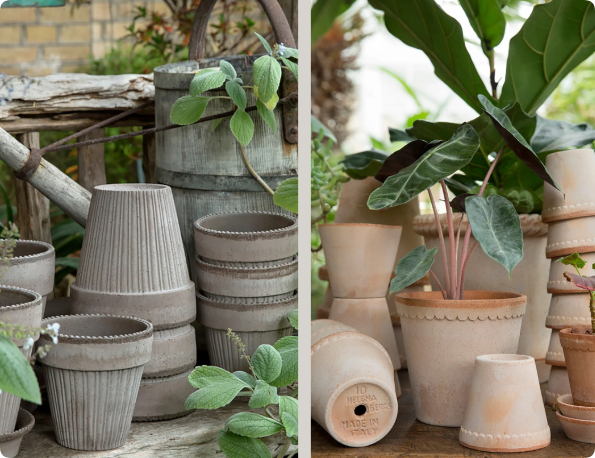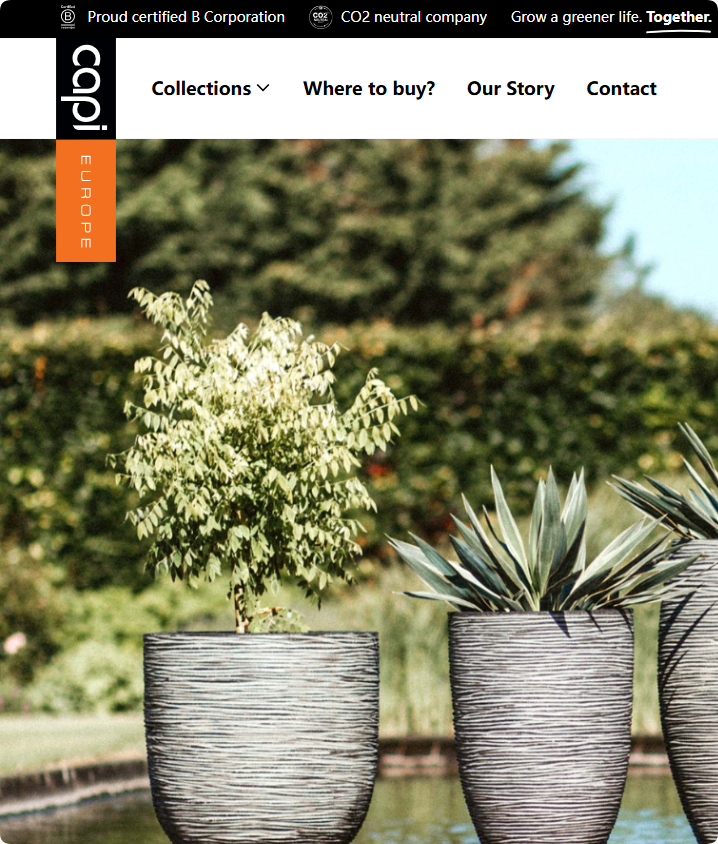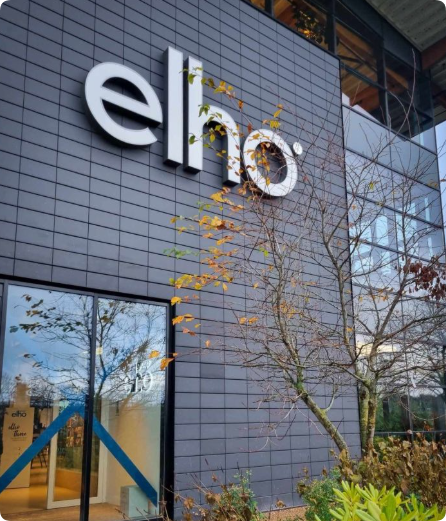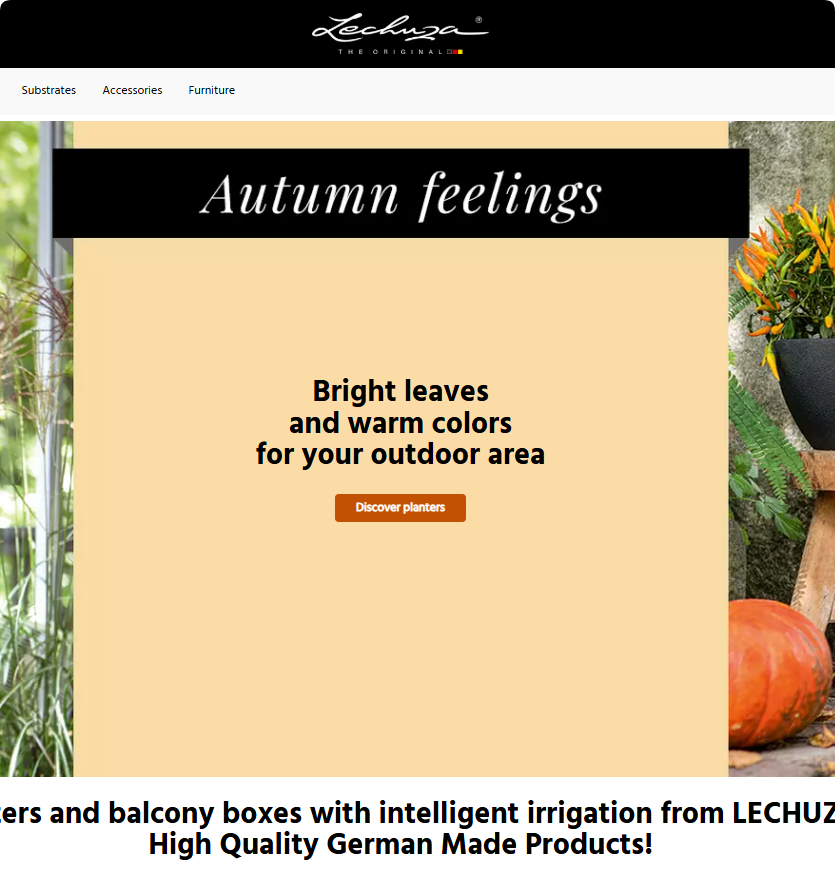Introduction
Ceramic flower pots are no longer just functional gardening tools; they are now a statement piece in European gardens. From quaint English cottages to minimalist Scandinavian terraces, ceramic flower pots have evolved to become an integral part of garden aesthetics and functionality. This blog explores the factors driving their popularity, design trends, key European brands, and their role in sustainable gardening practices, catering to the needs of global buyers like home décor retailers, gift shops, and e-commerce sellers.
The Rise of Ceramic Flower Pots in Europe
1. Aesthetic Appeal
Ceramic flower pots are valued for their timeless beauty. Their natural texture and vibrant glazes add a touch of sophistication to gardens, making them ideal for both traditional and contemporary settings.
- Traditional Gardens: Hand-painted ceramic pots complement classic European garden styles like French formal gardens.
- Modern Spaces: Neutral-toned and geometrically designed ceramic pots fit seamlessly into minimalist and urban gardens.
2. Sustainability and Environmental Concerns
Europeans are increasingly prioritizing sustainability in their purchasing decisions. Ceramic pots, being made from natural materials like clay, are eco-friendly alternatives to plastic. Their durability also reduces waste over time.
- Recyclability: Unlike plastics, ceramics are biodegradable.
- Longevity: Properly maintained ceramic pots can last for decades.
3. Functional Benefits
Ceramic flower pots offer practical advantages for gardening:
- Temperature Regulation: The porous nature of ceramics allows for better airflow and moisture retention, promoting healthy root systems.
- Weight: Their sturdiness makes them resistant to tipping over, particularly in windy outdoor spaces.
Trends in Ceramic Flower Pot Design for European Markets
1. Neutral and Earthy Tones
Colors such as terracotta, beige, and muted greens dominate as they blend seamlessly with natural surroundings.
2. Handcrafted and Artisanal Looks
European consumers appreciate unique, handcrafted designs that tell a story. Pots with intricate carvings, hand-painted motifs, or textured finishes are in high demand.
3. Innovative Shapes
Beyond traditional round pots, demand is rising for rectangular, triangular, and asymmetrical designs that cater to modern garden layouts.
Top 5 Flower Pot Brands in Europe
To understand the competitive landscape, here are five key brands dominating the European garden pot market:
- Elho (Netherlands)
- Known for its eco-friendly and lightweight plastic pots, Elho offers a range of contemporary designs. Although they specialize in plastic, their sustainable approach aligns with the growing demand for environmentally conscious gardening products.
- Lechuza (Germany)
- Famous for its self-watering planters, Lechuza blends functionality with sleek, modern aesthetics. Their ceramic-look designs are a popular choice for premium garden settings.
- Capi Europe (Netherlands)
- Capi Europe focuses on durable, sustainable pots inspired by nature. Their handcrafted designs and innovative materials cater to eco-conscious consumers.
- Bergs Potter (Denmark)
- A leader in handmade ceramic pots, Bergs Potter combines timeless Scandinavian design with high-quality clay sourced from Italy. Their focus on craftsmanship appeals to upscale garden enthusiasts.
- TerraViva (Italy)
- Specializing in traditional terracotta pots, TerraViva’s products are beloved for their classic Mediterranean charm. Their pots are ideal for gardens looking to embrace rustic or vintage aesthetics.
Comparison: Ceramic Pots vs. Other Materials
To help buyers make informed decisions, here’s a detailed comparison of ceramic flower pots with other popular materials.
| Feature | Ceramic | Plastic | Metal | Wood |
|---|---|---|---|---|
| Durability | Long-lasting, breakable | Short lifespan, non-breakable | Prone to rust, durable | Susceptible to rot |
| Eco-Friendliness | Natural, biodegradable | Non-biodegradable, polluting | Recyclable but resource-heavy | Renewable but treated with chemicals |
| Aesthetic Variety | High, customizable designs | Limited | Moderate | Moderate |
| Price | Mid-range to high | Low | High | Mid-range |
| Weight | Heavy, stable | Lightweight, unstable | Heavy, may dent | Lightweight |
The Role of Ceramic Flower Pots in Sustainable Gardening

1. Water Conservation
Many ceramic pots now feature integrated self-watering systems or water reservoirs to minimize waste.
2. Natural Insulation
Ceramic pots protect plants from temperature extremes, reducing the need for artificial heating or cooling.
3. Encouraging Biodiversity
The aesthetic appeal of ceramic pots encourages gardeners to cultivate a wider variety of plants, including native and pollinator-friendly species.
Challenges in the European Market
While ceramic pots are gaining traction, there are challenges manufacturers and retailers need to address:
- Fragility: Ceramic pots are prone to breakage during shipping. Proper packaging solutions are essential for international orders.
- Cost: Compared to alternatives like plastic, ceramics can be expensive, limiting their appeal to budget-conscious buyers.
- Weight: The heavier nature of ceramics can be a disadvantage for consumers who frequently rearrange their gardens.
Tips for Buyers: What to Look for in Ceramic Pots
- Material Quality: High-grade clay ensures durability and better moisture regulation.
- Glazing: Choose pots with non-toxic, lead-free glazes, especially for food plants.
- Drainage Features: Ensure pots have adequate drainage holes to prevent waterlogging.
- Customizability: Look for OEM and ODM options for unique branding opportunities.
Hale’s Commitment to Quality Ceramic Products
At Hale, we specialize in creating premium ceramic flower pots tailored to the European market. Our products combine traditional craftsmanship with modern designs, meeting the aesthetic and functional needs of diverse buyers.
- OEM and ODM Services: From unique shapes to custom glazing, we deliver products that align with your brand identity.
- Sustainable Practices: Our eco-friendly manufacturing processes prioritize low waste and high quality.
- Global Shipping Solutions: We ensure secure packaging to prevent damage during transit.
Conclusion
Ceramic flower pots are more than just containers for plants—they are essential elements of garden design, sustainability, and functionality. As their popularity continues to grow in European gardens, they present lucrative opportunities for retailers and e-commerce sellers. With their aesthetic versatility and environmental benefits, ceramic flower pots are set to remain a staple in European gardening trends.




